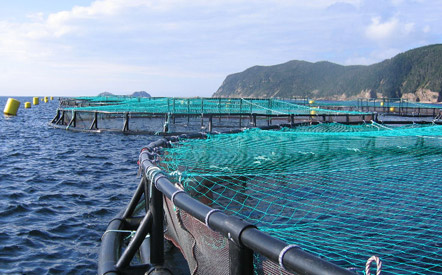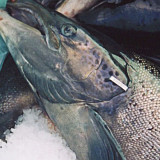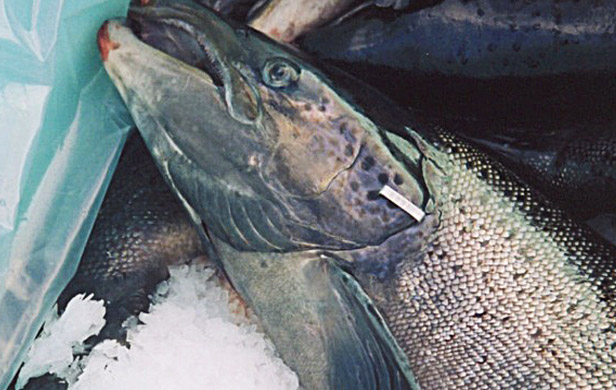I now have reliable figures on slaughtered fish payments of your taxpayer dollars to billion dollar Norwegian derivative fish farms in BC, and others across Canada. Cermaq Mainstream, Marine Harvest and Grieg Seafood may be happy to hear I will eat some crow, as the BC figures are much lower than my earlier estimate.
The reason for having to make estimates is that fish farms typically do their best to prevent the public knowing how much taxpayer money they receive from us for diseased fish that foul our pristine oceans. Behind the scenes, they often have lawyers trying to keep such numbers, and in the BC case, the disease records for testing of their farms, from the public, as happened during the Cohen Commission. He didn’t buy it.
Industry injunction kept taxpayer subsidies from public
In this case, a fish farm legal injunction made my request wait 10 months before our taxpayer dollars were put in a table and sent to me. My estimate of $35 million in BC is incorrect. The payments to Cermaq Mainstream’s IHN diseased Clayoquot Sound farmed salmon are: $2.64 Million for 959,498 diseased salmon (report date: Nov 2012); and, $201,000 for infected equipment and supplies (report date: Jan 2013). The total is $2.8 Million, or $3 per fish, not $30 per fish.
What has not made much news is that the Grieg Seafood open net operation in Sechelt also received payment for slaughtered IHN diseased fish: $1.61 Million for 312,032 diseased salmon (report date: Nov 2012); and, $152,000 for infected equipment and supplies (2013), or $5.60 per diseased salmon.
Aquaculture industry in Canada nets $50 million public dollars
Here’s the bottom line: in little more than a year, the Canadian Food Inspection Agency paid fish farms almost $50 Million taxpayer dollars for diseased slaughtered fish across Canada.
You see, in addition to the figures I received, I noticed the St. John’s Telegram newspaper reported $33 Million of taxpayer money given to fish farms in Atlantic Canada for slaughtered diseased fish. Their table shows a bunch of handouts pretty close to the often-quoted CFIA $30 per fish.
Some East Coast farms get over $20 per dead fish

In July 2013, Manuel’s Arm, a Kelly Cove Salmon farm, was paid $23.96 per fish for 100,000 diseased fish, and its Pot Harbour/Hermitage Bay site was paid $8,232,000, or $23.52 per fish for 350,000 diseased fish in December 2012. In fact, the big story from the east is that at the same time fish are dying of ISA and other diseases and we’re paying for it, DFO is giving NL almost $400 million more taxpayer money to put in more open-net fish farms! What a waste. And one of the firms we gave money to, Gray Aqua, has been sliding in and out of bankruptcy proceedings since last summer.
The reasonable British Columbian has to ask: where is the money for BC’s wild salmon? We want $400 Million for habitat restoration. What is DFO actually spending here? DFO’s community habitat program for Vancouver Island is so small it is almost non-existent: $200,000. For all of BC it is $.9 M this year or .45% of the NL money. DFO: we want $400 Million for wild salmon here. Not simply the $1.8 M salmon licence money given to the Pacific Salmon Foundation, where the $400 M should go so BC once again takes control of its own fish with a made-in-BC program.
Solution lies in closed-containment
The real solution to fish farms is to get the old-tech dinosaurs out of the water, which the BC government can do in 60 days by cancelling leases. Even though fish farms say it can’t be done, I have a list of 65 different closed systems comprising more than 8,000 actual on-land farms around the world.
The most recent symposium on closed containment was in Virginia this past September. Tides Canada maintains a link to the plus fifty presentations. They are even doing closed containment science in Norway, for Pete’s sake.
You may wonder why DFO backs in-ocean fish farms in BC at all. I sure do. And we all remember the Cohen Report recommended DFO be stripped of this conflict of interest and deal solely with wild salmon – the 2005 Wild Salmon Policy and 1986 Habitat Policy, with a new west coast director general for bringing back Fraser sockeye. None of these have happened since Report date of October 31, 2012.
Jobs, public revenue from salmon farms overstated
It’s hard to fathom DFO’s interest in fish farms. Perhaps they believe what they and fish farms like to say: fish farms create employment and revenue. Well, I waited five years for the best source of info to update their numbers, and they show decisively that fish farms don’t contribute much of either.
The best stats, from BC Stats – that DFO paid for and put its name on, but acts as though they don’t exist – show this is not true.
In BC all aquaculture comprises a measly $61.9 Million of Gross Provincial Product, meaning only 9% of the fishing sector’s total of $667.4 M BC GPP contribution. Sport fishing is miles above at $325.7 M or 48.4%. And the employment that they talk of is similarly small at 1,700 or 12.2% in multiplier terms that include spin off jobs. The entire fish sector is 13,900 jobs, with sport fishing 60.4% at 8,400 jobs. The $400 Million for wild salmon restoration would do wonders for processing, commercial and sport fishing employment, not to mention the entire wild BC province.
Sharp wild salmon decline coincides with arrival of farms
And there’s more. I spotted a science paper that confirms what most supporters of wild salmon have always suspected: wild salmon stocks in BC have declined 50% since fish farms set up shop. The paper shows the same in Ireland, Scotland and Atlantic Canada. Note that Commercial sector employment has been cut 50%, 1,400 jobs, in the same time period.
So, I did some sleuthing and found that the actual number of real fish farm jobs in BC is a very small 795. Commercial job losses in the same period are 1,400 jobs due to the loss of wild salmon. So fish farm jobs likely eliminate jobs in other sectors, resulting in a net employment loss. The same can be said for revenue.
This does not add in losses in processing, and the sport sector from DFO allowing wild salmon to decline 50%. Little wonder the Cohen Commission said DFO is in a conflict of interest. His recommendation was that fish farm support needs to be eliminated and DFO should concentrate solely on the Wild Salmon Policy and its Habitat Policy.




We need to get everyone to boycott all Atlantic Salmon from BC fish farms.Spread the word around to every comment section that you are on for a full-blown boycott.
Thanks for doing the hard work in getting this corruption out to the public
Hi
Maybe it is time to do a story on my aquaculture wrongful conviction .
First Canadian Science Researcher to be convicted of doing the science that I had a written national agreement to do .
Assaulted and premises searched by armed contractors with no search warrant .
New trial ordered based on the lies of senior government .province refuse’s new trial
Maybe Dominic’s wife Judge Jolene had to many conflicts of interest to give a fair trial
David Jones
Moncton
Excellent article . thank you for doing all the research.
It makes me sick to see how much money we are giving them.
In comparison Alaska has 17,000 salmon fishermen catching over 200 million salmon annually. amazing what a few hatcheries can do!
You should check into how many hundreds of thousands of fish Steve Atkinson of taste of Bc is killing in his closed containment every year…..closed containment is needed yes, but killing hundreds of thousands of fish just to learn is pathetic
Nick
I have widely divergent, deep interests. My first degree is in biochemistry, and my blog: fishfarmnews.blogspot.com summarizes more than 15,000 pages of science on the environmental damage caused by fish farms.
No Canadian wants to give millions of our taxpayer dollars to billion dollar foreign fish farms. My final degree is in finance.
Nice try.
Well said DC…..
Well if a poet wrote this article then it must be true. I also get medical advice from a mime.
That’s called an ad hominem attack, Nick, which is meaningless. Deal with the subject matter.
Nick your comment proves you are an id—iot as does the second sentence,
Open net fish farms pose a serious threat to the existence of our wild salmon and other seafood products, on both coasts of this country due to ISA infection and other foreign diseases introduced into our marine environment. Consumption of these infected products maybe hazardous to consumers health.
It is advised that distributors of this product be boycotted or at least informed of your displeasure at their insistence on marketing these products. Loblaws and Great Canadian Super Stores, are the two main distributors of these products.
Due to the lack of oversight by our present federal government of the products offered in our markets, both foreign and domestic, it is important to you and your families health that you become informed about the products that you are choosing to purchase. The government is no longer the safety net that it once was, it is now a facilitator to large, self regulating, multi national corporations who put concerns for profit, far ahead of your health.
This is evidenced, not only in the sea foods offered, but by the refusal to label GMO products, the over use of growth hormons and antibiotics in the dairy, beef, pork, poultry and other meat products industries.
Interesting article. Have you sent a copy of it to the Minister of Fisheries & Oceans, and if so, have you had any response from her? I’m interested to see how she explains herself on this.
Interesting, Jack, the author did send the minister a number of questions surrounding these issues recently. This is her (non)-response:
https://commonsensecanadian.ca/fisheries-minister-responds-salmon-farm-concerns-sort/
Yes, no reply as yet. It is important to tell Shea and Harper that BC wants fish farms out of the water.
With their very few jobs – 795 – they can go back to Norway and the BC economy will not be damaged at all. In fact, with wild salmon numbers going up from fish farms being gone, the economy will be in better shape. More jobs and revenue from commercial, processing and sport.
Hey!!??! Where does one sign up for this? I would like to redeem dead fish for money as well. Are there any criteria as to how dead they must be or to what state of decomposition? Is there (like angling for live fish) a daily limit? Will it be necessary if I have, say, a thousand to present them all or will they take my word on it? Hmmmmm, this sounds extremely fishy – pun intended.